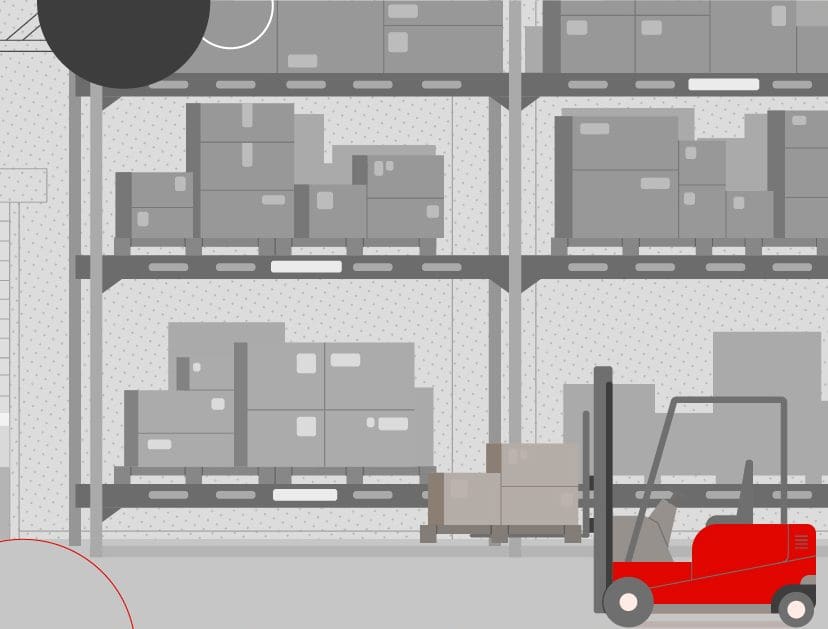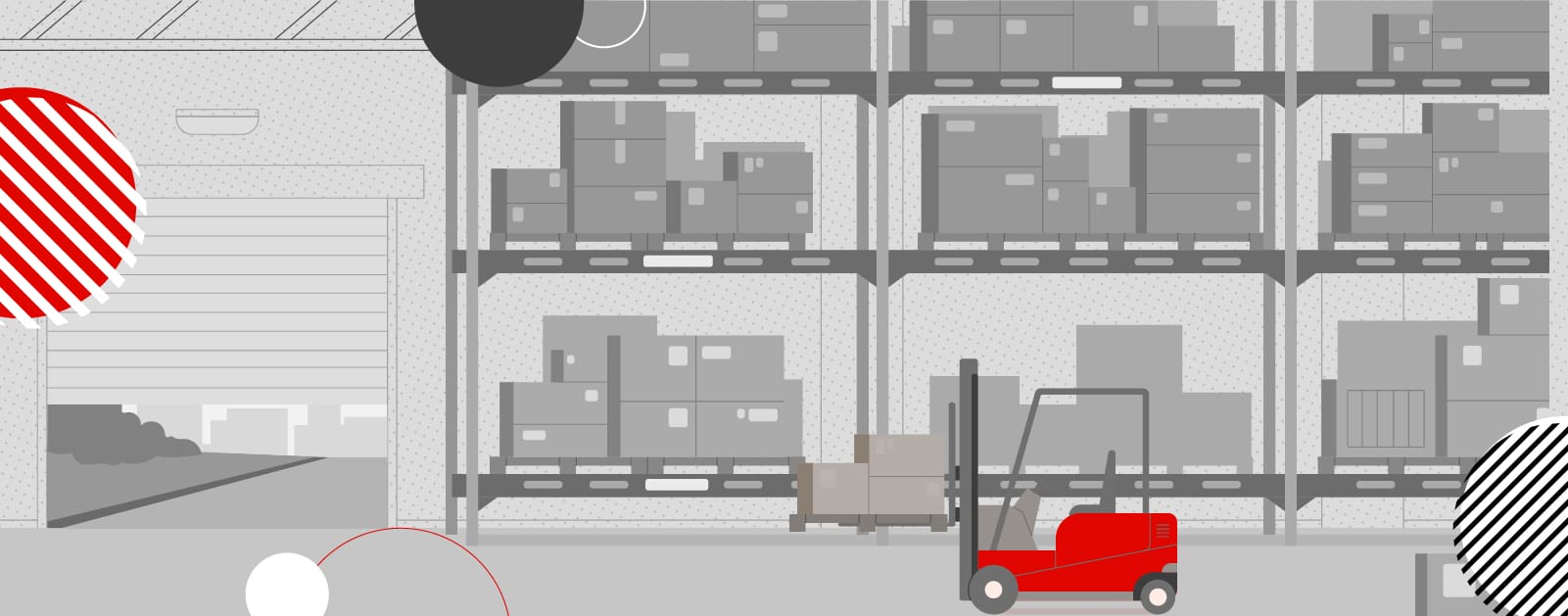
B2B Ecommerce for Wholesalers Explained: Its Benefits and Impacts on Future Success
Laura
Buzin

When the average person thinks about a globally impactful, economy-driving industry, retail often comes to mind. However, there’s an even bigger giant lurking behind the scenes, contributing to over $53 trillion in 2024 alone: wholesale.
With this economic power behind it, it’s no surprise that many wholesalers have turned to B2B ecommerce to continue to supply their customers with the large orders, quick delivery times, and access to a wide variety of inventory they need to make their own sales.
In this blog, we’ll examine B2B ecommerce’s evolution in the wholesale space, how it’s impacting these businesses overall, and how wholesalers can use it to position themselves for continued success.
What Does B2B Ecommerce Look Like for Wholesalers?
The wholesale industry is far from a monolith. It can be segmented:
- By type: Non-durable goods wholesalers, wholesale electronic markets, agents and brokers, and durable wholesalers
- By ownership: Wholesale or distribution chain OR independent wholesalers
- By price range: Premium, mid-range, and economy
Despite this, the way wholesalers have, currently leverage, and will continue to use B2B ecommerce is remarkably similar.
Past
Reliance on electronic data interchange (EDI)
At the dawn of B2B ecommerce in wholesale, many businesses used electronic data interchange (EDI) that helped them pass documents electronically between themselves and trading partners. This included inventory rates, contracts, orders, and more. While revolutionary at the time of their creation, these systems lack the robust automation and security capabilities of many modern ecommerce and accounting systems today.
Technological challenges
Traditional wholesale operations were often powered by disparate systems. One for financial tracking, one for inventory management, still another for delivery scheduling. These stacked systems often didn’t play well together, resulting in incorrect stock estimates, late orders, and customer frustrations.
Simple platforms
Additionally, many of the systems used by wholesalers of the past were simple ones. Even for businesses with multiple locations and hundreds of staff members, platforms built for wholesalers were often designed to address one part of their backend processes. The wholesalers of that period, of course, still achieved sales and hit quotas but lacked clear insight into the full scope of their operations.
Present
Today’s wholesalers benefit from having access to systems designed to meet their specific business needs.
Automated wholesale processes
Automation reduces the risk of human error and decreases processing time across every aspect of wholesale operations. This means orders are fulfilled quicker, more accurately, and reach buyers at the rapid pace they’ve come to associate with their orders in a B2C setting.
Lower overall spending
The right B2B ecommerce solution not only brings in revenue but helps wholesalers save money overall. Because of its specific wholesale-geared processes, businesses can save money—and time—by relying on these systems for improved operational efficiency.
Scalability
As wholesalers grow and expand, modern B2B ecommerce solutions are able to scale with them. This means businesses no longer have to worry about outgrowing their solution as they add to their inventory diversity or buyer base.
Global competition
Modern wholesalers are no longer limited by geographical constraints. Many businesses provide inventory to customers around the world—and they can do so because of a robust B2B ecommerce solution.
Better managed cash flow
The right B2B ecommerce platform provides wholesalers with more accurate insights into where their money is at any given time. This in turn ensures a healthier, more efficient cash flow throughout the organization.
Omnichannel inventory management
For wholesalers, being able to handle and manage multiple locations within one system is key to success. An integrated, flexible B2B ecommerce solution makes inventory management, order bundling, and other vital processes simple—all at the click of a mouse.
Future
The future of B2B ecommerce in wholesale businesses is bright. Let’s take a look at some of the future features that will help these organizations achieve and maintain operational success.
Subscription models
A subscription model allows buyers and businesses to automate recurring purchases, saving time, reducing the risks of stockouts, and better financial planning. Key advantages include streamlined inventory management, increased customer lifetime value, and stronger supplier relationships.
Increased personalization
The buyers of tomorrow want curated, personalized shopping experiences—even with their B2B purchases. Future-focused B2B ecommerce solutions know this and will continue to enhance their offerings with this in mind. This will look like customizable buyer portals, carts that save orders for buyers, and more.
Mobile-first shopping options
More and more B2B purchases are happening on phones. Many B2B ecommerce vendors are already optimizing their solutions to cater to the growing number of buyers who prefer to make purchases on their mobile devices. This enables wholesale buyers to place orders, browse catalogs, and manage their accounts anytime, anywhere.
Data-driven insights
Future B2B ecommerce solutions will provide wholesalers with better visibility into what’s selling, to who, and why with accurate data insights. Wholesalers will be able to view the entire scope of their buyers’ wants and needs in one centralized data repository.
Increased sustainability efforts
Many of today’s–and tomorrow’s–buyers are looking for businesses that focus on sustainability, while still being able to deliver them the items they need. This will look like sustainable sourcing, eco-friendly packaging, minimized carbon emissions during the delivery process, and more.
The Impact of B2B Ecommerce on Wholesalers
Now that we’ve established the past, present, and future of B2B ecommerce for wholesalers, let’s dive into the tangible ways it’s transforming this industry.
Lower costs: A wholesale-focused B2B ecommerce solution optimizes back-office operations. This saves wholesalers valuable time and money, making them more efficient and effective at serving their customers and managing their large inventories.
Increased sales and revenue: B2B marketplaces are the fastest-growing digital sales channel in the wholesale and manufacturing sectors—and only projected to continue to grow.
Expanded reach and market access: Wholesalers are increasingly leveraging ecommerce to optimize their supply chain and potential buyer pool. By 2029, the B2B ecommerce market value is expected to reach $66 trillion.
Streamlined operations: A far cry from traditional offline transactions, B2B ecommerce’s digital capabilities position wholesalers to streamline procurement, enable real-time visibility, and engender better collaboration across interconnected supply networks.
Your B2B Ecommerce Journey as a Wholesaler
Step 1: Examine the specific support your business needs as a wholesaler
What exactly do wholesalers need from their B2B ecommerce solution? Answering the following questions can help point your business toward the right B2B ecommerce vendor and platform.
- Does the solution offer customer-specific pricing options and discounts?
- Will my buyers be able to quickly complete bulk orders? And can the solution help them schedule frequent reorders?
- Does this B2B ecommerce platform integrate with my existing ERP?
- What are the search capabilities of this system?
- Is the interface user-friendly and intuitive?
- What level of security does the system provide to my organization and my buyers?
- Will my inventory and stock information be synced across all of my business’s locations?
Step 2: Investigate and evaluate potential vendors, especially ones with wholesale experience
Once you’ve established the kind of B2B ecommerce solution your wholesale business needs, it’s now time to evaluate potential vendors. Ideally, a vendor already has experience with other wholesale customers and knows how its solution will work with organizations like yours.
Step 3: Create your B2B ecommerce plan and potential processes
Once you’ve chosen a new solution, it’s time to evaluate what processes were working and which need to be elevated with your platform’s help. For wholesalers, this could include things like inventory management, ordering processes, payment options, etc.
Step 4: Prepare staff and locations for incoming changes
Adding in new software can be a stressful time for staff. Ensuring that your B2B ecommerce provider offers training and support can help make this transition easier, positioning your business for success even amid change.
Step 5: Monitor customer feedback and engagement
While preparing your staff for a new system is important, it’s equally vital that customers feel supported and seen as you implement your B2B ecommerce strategy. Giving them the opportunity to provide feedback can help your wholesale business retain customers while still reaching its ecommerce goals.
Final Thoughts: B2B Ecommerce is Here to Stay for Wholesale
Wholesale businesses will continue to reap the financial and operational benefits of B2B ecommerce for the foreseeable future. From better customer service to enhanced backend processes, B2B ecommerce is here to stay for wholesale.
k-ecommerce knows a thing or two about supporting wholesale organizations. With hundreds of wholesale customers, our solution can scale and support businesses with thousands of SKUs and intricate order requirements.
Schedule a demo with one of our B2B experts to learn more about how we can take your wholesale operations to the next level!


